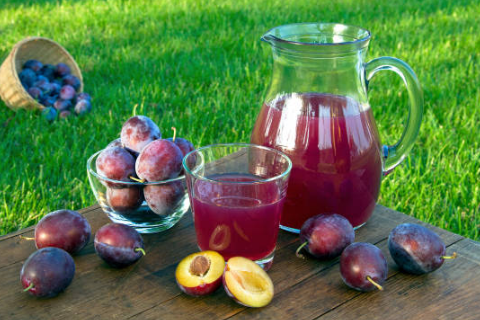Prune juice may be best known as a natural remedy for constipation, but it’s much more than just a laxative. While it does get your digestive system moving, this juice—made from dried plums, or prunes—also offers a variety of lesser-known health benefits.
Curious what else it can do for your health? Let’s break down the top benefits of prune juice and how to add it to your daily routine.
What Is Prune Juice?
People often get confused between prunes, plums, and prune juice. Here’s the difference: they all start out as plums—the red or dark purple fruit you find fresh in stores or straight off a tree. When plums are dried, they’re called prunes. To make prune juice, manufacturers rehydrate prunes in hot water and extract the liquid.
In terms of flavor, prune juice is sweet with a bit of tang—some say it leaves a slightly bitter aftertaste. Though it’s known for promoting bowel movements, many people enjoy it just like any other juice. That said, it’s naturally high in sugar, so it’s not something you want to sip all day long if you’re watching your calories or blood sugar levels.
Top Health Benefits of Prune Juice
1. Relieves Constipation
Prune juice is an age-old remedy for constipation, and modern science backs it up. One study found that people who drank prune juice daily for eight weeks had bowel movements three times more regularly than those who didn’t.
Why does it work so well? Prunes are rich in a sugar alcohol called sorbitol, which draws water into the intestines and acts as a natural laxative. Prune juice also contains pectin, a type of starch that helps soften stool. While the juice isn’t especially high in fiber, one 8-ounce glass can contain up to 3 grams, which supports overall digestive health.
2. Boosts Exercise Performance
One standout nutrient in prune juice is potassium, a mineral essential for proper muscle function and physical performance. It plays a key role in muscle contraction and relaxation, making it a helpful nutrient for athletes and active individuals.
3. Supports the Immune System
What do you get when you dry and juice a plum? Antioxidants. These compounds help fight off free radicals and may strengthen your immune system against illness.
Prunes are rich in carotenoids, anthocyanins, flavonols, and vitamin C. Anthocyanins, in particular, have antimicrobial, anti-inflammatory, and antiviral properties. They’ve been studied for everything from potential cancer-fighting abilities to balancing hormone levels.

4. Good for Heart Health
Potassium isn’t just good for muscles—it also benefits your heart and cardiovascular system. It may help lower high blood pressure and reduce the risk of heart disease and stroke.
Potassium works in two key ways: by helping the kidneys flush out excess sodium, and by relaxing blood vessel walls, improving circulation.
5. Supports Bone Health—Especially for Postmenopausal Women
When thinking of bone-building foods, you probably picture dairy—but prunes and prune juice deserve a spot, too.
A 2022 study found that women who ate 5–6 prunes a day had improved bone mineral density. That’s big news for both men and women at risk of osteoporosis. Postmenopausal women are especially vulnerable, and much of the recent research on bone health has focused on this group. However, older men may also benefit from adding prunes to their diet.
6. May Help Prevent Iron Deficiency
Iron deficiency is the most common nutrient deficiency in the world, especially among women of childbearing age. A single glass of prune juice provides about 17% of your daily iron needs.
It’s not quite as iron-rich as beef or spinach, but it’s a great way to boost your daily intake and lower the risk of iron-deficiency anemia.
How to Add Prune Juice to Your Routine
So, how much prune juice is good for you—and how much is too much?
The ideal amount really depends on how sensitive your gut is. Experts recommend starting with 4 ounces (half a cup) to see how your body reacts. If it causes urgency or bloating, scale back to a smaller amount.
For digestive support, it’s best to drink prune juice first thing in the morning.
While drinking it straight is the easiest option, there are plenty of creative ways to enjoy prune juice or prunes if you’re not a fan of the taste—or want to limit sugar intake. Try these ideas:
-
Blend prune juice into a fruit smoothie.
-
Make a glaze or sauce for roasted meats.
-
Toss chopped prunes into trail mix.
-
Mix them into muffins or quick breads.
-
Sprinkle over oatmeal or bran flakes.
-
Add them to grain-based dishes, like couscous or rice.
-
Slice in half and fill with peanut butter for a sweet, protein-packed snack.
Potential Side Effects
While prune juice’s natural sugars help stimulate the digestive system, they can also cause a rapid spike in blood sugar. If you have a condition like diabetes, consider limiting your portion or pairing it with a high-protein snack to slow absorption.
Also, not everyone tolerates prune juice well. The sorbitol that helps relieve constipation can also lead to diarrhea, gas, and bloating in some people. Those with IBS or on a low-FODMAP diet may want to avoid it altogether.

